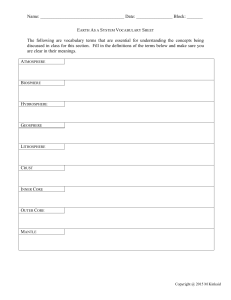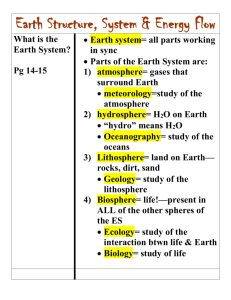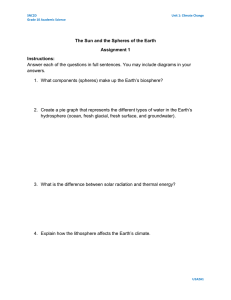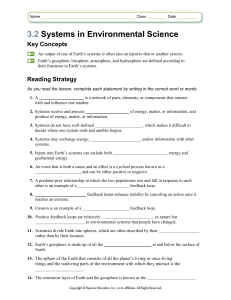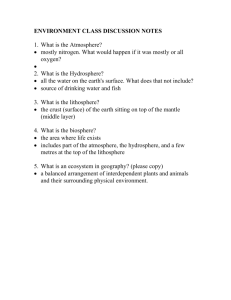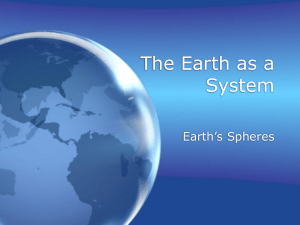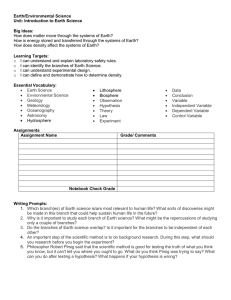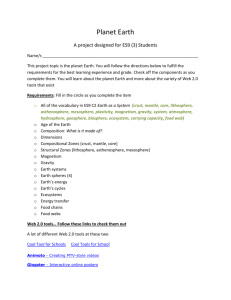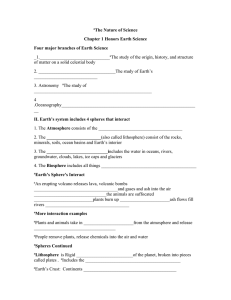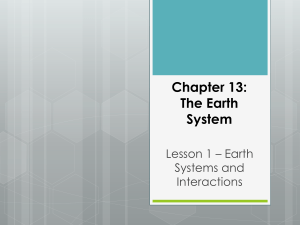The Nature of Science Chapter 1 Honors Earth Science
advertisement
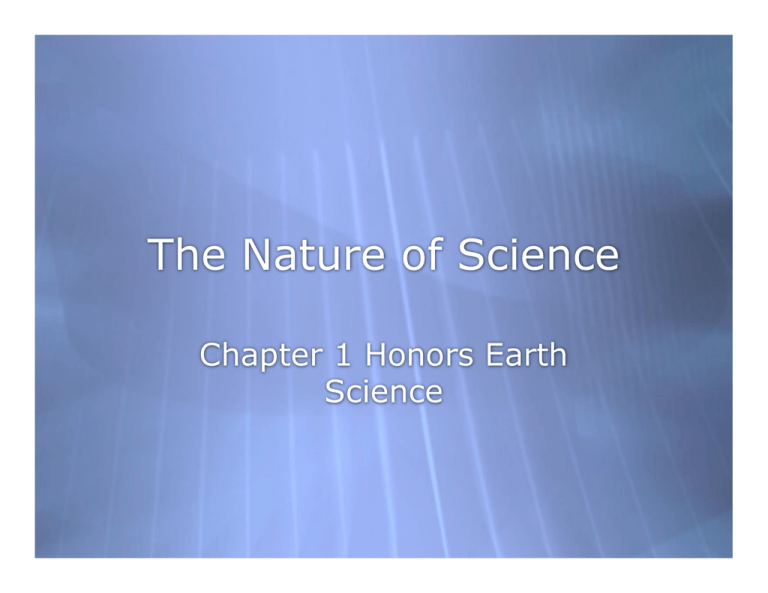
The Nature of Science Chapter 1 Honors Earth Science Four major branches of Earth Science Geology The study of the origin, history, and structure of matter on a solid celestial body Meteorology The study of Earth’s atmosphere Astronomy The study of the universe Oceanography The study of the ocean and seas Earth’s system includes 4 spheres that interact The Atmosphere consists of the gases that surround the Earth The Geosphere (also called lithosphere) consist of the rocks, minerals, soils, ocean basins and Earth’s interior The Hydrosphere includes the water in oceans, rivers, groundwater, clouds, lakes, ice caps and glaciers The Biosphere includes all things living or coming from living things. Visualize Earth’s spheres: http://www.classzone.com/books/earth_science/terc/content/ visualizations/es0102/es0102page01.cfm? chapter_no=visualization Earth’s Sphere’s Interact An erupting volcano releases lava, volcanic bombs (geosphere) and gases and ash into the air (atmosphere), the animals are suffocated (biosphere), plants burn up (biosphere), ash flows fill rivers (hydrosphere). http://volcano.und.edu/vwintl/vwintl.html More interaction examples Plants and animals take in oxygen from the atmosphere and release carbon dioxide. People remove plants, release chemicals into the air and water Car exhaust. © NMM London Spheres Continued Lithosphere = geosphere Rigid outer shell of the planet, broken into pieces called plates Includes the crust and the outermost mantle Earth’s Crust Continents made up mostly of Granite Oceanic Crust Made up of mostly Basalt which is cooled magma, this is denser than Granite Next layer of mantle is called the asthenosphere This layer is a solid that flows like a very thick liquid. 1600 degrees C but extreme pressure keeps it solid The lithosphere floats on the asthenosphere Earth’s layers Earths lower mantle is mostly very dense, dark rock called peridotite Beneath the mantle is earth’s core which is mostly made up of nickel and iron. Outer liquid core Inner solid core Steps used in Scientific Method 1- Identify the problem 2- Research 3- State Hypothesis 4- Experiment Select sample Determine variables Observe Record results 5- Analysis of data 6- Conclude Look at data and from conclusions Re-evaluate hypothesis Formulate new question Experimentation (See p. 930 Skills) Independent variables (also called experimental variable) The factor that is manipulated by experimenter to observe its effects Dependent variables Factor that can be changed if the independent variable is changed Examples If you are testing the effect of adding specific amounts of fertilizer to water on plant growth, and you measure the plants daily… The independent variable is ________________ The dependent variable is __________________ Example 2 If you are testing the effects adding acid to water on the breakdown of rocks and you weigh the rocks daily… The independent variable is ________________ The dependent variable is __________________ Control Group Used to prove that the results of and experiment are the actual results of a condition What would be used for a control group in the two examples? Control group Exp. 1 = Control group Exp. 2 = Controlled Variables or Constants What conditions would you need to control in order to make these valid experiments? (These are called constants or controlled variables) Why is this so important? Controlled variables for Exp. 1 = Controlled variables for Exp. 2 = Hypothesis vs. Theory vs. Law Hypothesis is an educated guess based on observations of the natural world. Research usually comes first Involves prediction (If, then) Includes explanation, not just a wildguess Theories Theories are explanations based on many observations and repeated experiments; has stood up to peer review Can be revised or rejected as new technologies provide new evidence Examples Theory of Plate Tectonics Theory of Evolution Germ Theory Laws Laws describe the behavior of natural phenomena Also called “rules of nature” because they work every time but are not always fully understood Ex. Law of Conservation of Energy Energy cannot be created or destroyed by ordinary chemical means. Newton’s Law of motion A body in motion remains in motion unless acted on by an outside force. SI Units What does SI stand for? What are the SI units for: Length Mass Area Volume Density Weight Temperature SI units stands for system international Length meter m Mass kilograms Area Meters squared Centimeters squared Volume Cubic meters/cm, liters, or milliliters ml Density Grams per centimeter cubed Weight An average person weighs about 60 kg =600N Temperature Celsius 0- freezing 100- boiling
